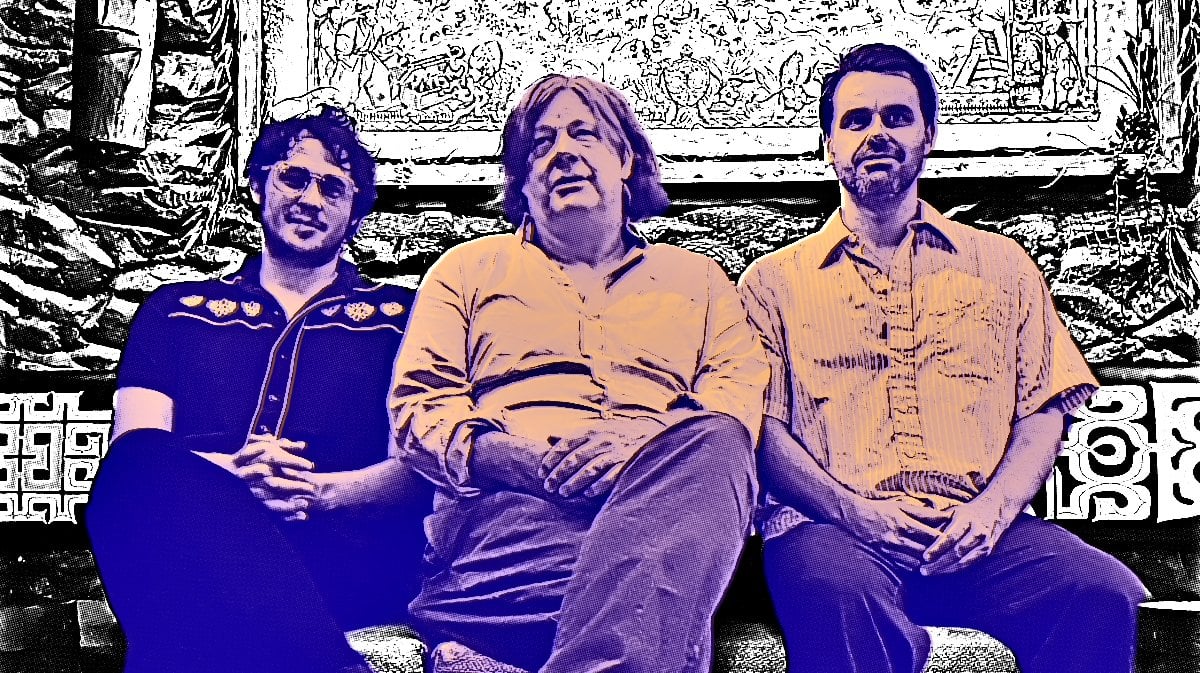
It’s easy to get distracted by the number 23. Not only are we told it’s everywhere by thinkers as prestigious as Robert Anton Wilson and Jim Carrey, but those two digits look and feel special. How about a 23rd album? Perhaps that’s magical in some way (especially if the KLF ever got there), but to most, it just sounds like a lot of albums. Twenty-two is a lot, too, not to mention twenty-four. But I don’t want to get hung up on the 23rd album because it doesn’t matter to John Andrew Fredrick of The Black Watch. Weird Rooms is the band’s album number twenty-three, but John isn’t counting or accumulating. He’s persisting.
John may be aware of the potential baggage in musical prolificness. Quantity sometimes counterintuitively means stagnation: running in circles, repeating the comforts of an established sound or workflow, or releasing the same record ad infinitum. I can testify that this is not the case with The Black Watch. Not only does John profess an incapability of stopping rather than an effort at ‘building content,’ but also of directly reacting, in a sort of dialogue, with his preceding albums. Changing line-ups, songwriting styles, producers, and, as is the case with Weird Rooms, city locations (Austin, this time) enforce a variety of textures and execution. There’s no sameness here—The Black Watch’s twenty-third record probably sounds as fresh as 1988’s debut.
John and I planned an interview session for a long while, with my delays a glaring (to me) contrast to his musical productivity. Weird Rooms was finally the excuse to get our screens together. John is a delightful conversationalist, an obvious fan of wordplay and language (he’s also an author), and inspiringly enthusiastic about his creative work. We discussed so many things: creating music for personal satisfaction, writing from the subconscious, the unexpected perks of a Lutheran upbringing, what focusing on singles says about your band, and so much more. I tried talking to him about the number 23, but he wasn’t having it.
I mentioned how The Black Watch, and especially Weird Rooms, wears its influences on its sleeve. I likened this to a recipe in that the album’s sound takes things from different, identifiable artists without sounding directly like any of them. I suggested that that recipe includes a heaping tablespoon each of My Bloody Valentine, The Cure, and The Beatles. John agreed, adding Syd Barrett, who is probably floating around like a bay leaf. It’s a great mix of ingredients, making songs like “Gobbledegook,” “Swallowed,” and “Miles & Miles” achieve Michelin-star tastiness.1My metaphors aren’t getting any better.
And though Weird Rooms was the inspiration for our conversation, John was especially excited about The Black Watch’s next record, (tentatively?) titled Bye. “With a pun on saying goodbye and a bye in a tournament,” John explained. While John was understandably bubbling over with thoughts on this 24th effort—to him, it’s the fresh new thing, of course—I’m trying to hide my astonishment that we’re on the heels of Weird Rooms‘ release and the next album is already in the hands of a mastering engineer. At least John admitted it wasn’t a good idea to release it immediately.
But I can’t get over the as-yet-unreleased album’s title, Bye. Does John give it a double meaning because it’s a fork in the road? Is it a goodbye, as Pop Matters recently wondered? Or, as in a tournament, will it mean The Black Watch is ready to advance to the next in a long, long series of rounds? John told me he couldn’t stop, even if he wanted to, so I’m optimistically embracing the sporting option. I doubt 24 is The Black Watch’s idea of a final score.
Here’s the extended audio of my conversation with The Black Watch’s John Andrew Fredrick, with an excerpted text version below the fold. At the bottom, John answers my “What’s something you love?” inquiry with the aplomb worthy of someone with a PhD in the art of words. Dig it!
